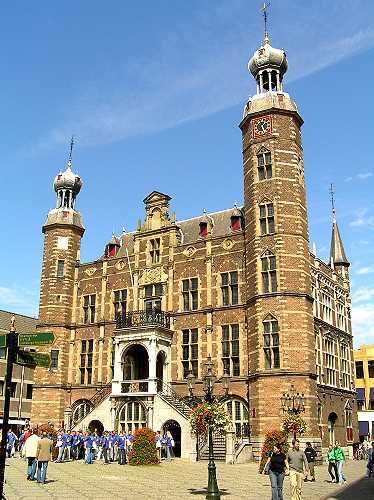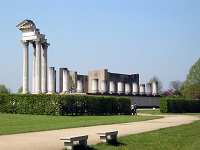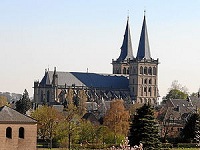The surroundings
In the surroundings of 'The Vorster Pastorie' there are lots of places to visit and things to do to make your holiday a success. For instance, nature lovers can spend their time walking and cycling and enjoy the quiet, the space and the plentiful natural beauty. There are also a lot of attractive villages to visit in the area; in Limburg or just over the border in Germany. Culinary speaking, there are also a lot of options. Just think about the vast amount of regional specialties, from vlaai (a typical Limburgse pie) to blue berries. Culture lovers also won’t be bored. Due to the parsonage’s position close to the Dutch-German border; there are dozens of museums, festivities and organised activities in the region.
Partly because of this 'The Vorster Pastorie' is a fine base for your trips. For more tourism information in the area, click on the button 'Tourist tips'.
Walking

Cycling
Arcen (3 km)
.jpg)
Lottum (4 km)
.jpg)
Venlo (25 km)
 The centre of this town lies around the current Jodenstraat and the Oude Markt. In 1343 the duke Reinald II of Gelre gave Venlo city rights. Due to this act from 1350-1500 Venlo grew into one of the most important cities of the former duchy Gelre. Unfortunately the Second World War did a lot of damage to the historic centre of Venlo. Never the less Venlo is still a very nice city with lots of possibilities, from the different terraces to the shopping facilities (known in the area). Venlo also has a very rich and abundant carnival history. ‘t Venloosh Vasteloaves Society JOCUS (1842) is the oldest still functioning carnival society of Holland. For many years now carnival has always started with the Boétegewoéne Boétezitting, which attracts a lot of carnival lovers from all over Holland.
The centre of this town lies around the current Jodenstraat and the Oude Markt. In 1343 the duke Reinald II of Gelre gave Venlo city rights. Due to this act from 1350-1500 Venlo grew into one of the most important cities of the former duchy Gelre. Unfortunately the Second World War did a lot of damage to the historic centre of Venlo. Never the less Venlo is still a very nice city with lots of possibilities, from the different terraces to the shopping facilities (known in the area). Venlo also has a very rich and abundant carnival history. ‘t Venloosh Vasteloaves Society JOCUS (1842) is the oldest still functioning carnival society of Holland. For many years now carnival has always started with the Boétegewoéne Boétezitting, which attracts a lot of carnival lovers from all over Holland.Kevelaer (25 km)
.jpg)
Xanten (45 km)


Roermond (50 km)
.jpg) Roermond is full of nice churches, cathedrals, convents and monuments. For instance the Saint Christoffel cathedral (1410) on the market square or the town hall built in 1700. Roermond’s city centre is also a good place for shopping. Through a pedestrian tunnel you can also reach the “Designer Outlet”, just outside the city walls. If that doesn’t fancy you, Roermond is also known for it’s water recreation (for instance the Maasplassen).
Roermond is full of nice churches, cathedrals, convents and monuments. For instance the Saint Christoffel cathedral (1410) on the market square or the town hall built in 1700. Roermond’s city centre is also a good place for shopping. Through a pedestrian tunnel you can also reach the “Designer Outlet”, just outside the city walls. If that doesn’t fancy you, Roermond is also known for it’s water recreation (for instance the Maasplassen).
